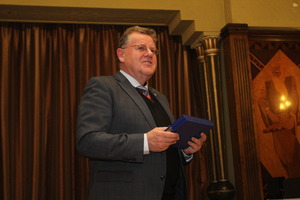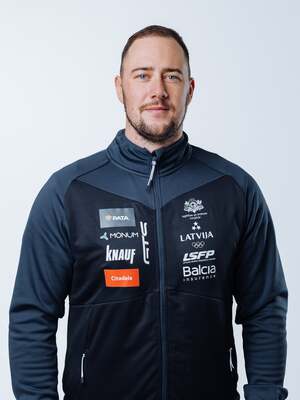
Interview with FIL President Josef Fendt
1) How would you explain German luger dominance in the sport for 20 years?
Regarding the dominance of German luge athletes, there are several reasons. The sport of luge has always been very important in Germany. The youth work is very intense and extensive and from this many top athletes are developed who then train with constant tough internal competition. They have a large professional coaching staff and certainly very good material.
2) Does it anyhow affect this sport?
On the one hand, it is good for our sport to have highly professional athletes. It guarantees us also very good high ratings especially in German TV, which is in turn important for our sponsoring contracts (German companies). However, the overly strong dominance of one country is not desirable over a long period of time from an international standpoint. But I think that when one looks at the various disciplines throughout the whole season, we have obtained a good international mix.
3) Does FIL consider possibility to unify runners (same material for everyone, etc.) for more equal competition?
No, the FIL has no plans to require unified runners or other sled material. We have good strict technical rules and also inspections with which were are able establish the most level playing field possible.
4) Does FIL consider including more new competitions, like team relay and sprint, this year (upcoming season)? Were these successful in the past?
In the coming season, we will certainly not increase the number of competitions of the very successful Team Relay from the six we have had up to now. However, I won’t rule it out for the future. The Sprint competition is still in the beginning phases with some room for improvement and we will most likely not add any more Sprint races to the 3 in the coming season. No further competitions are planned for now.
5) World Championships in Latvia, Sigulda this year - your rating? What surprised you positively and where did you see room for improvements?
The World Championships in Sigulda were a very good event in every aspect. The entire organization and execution of the competitions were excellent. I only heard words of praise from my representatives for the work together with the WCh OC. Also the track conditions (ice quality and ice profile) were excellent. The large number of spectators and high-ranking honorary guests were also pleasing. It was an event worthy of the World Championships.
6) Lately there has been more and more news about abandoned Olympic objects, including bobsleigh and luge tracks. Does the sporting world really miss them and why does it happen?
The issue of abandoned Olympic objects barely affects us. I point out again and again that of our 11 joint Olympic artificially iced tracks (FIL and FIBT) since the 1976 Olympic Winter Games, 9 tracks are still in use today! This is the success of our common strategy of both world federations FIL and FIBT for athletic use of our Olympic facilities after the Games. Only the track from the 1984 OWG in Sarajevo was damaged in the war (is being repaired however for sliding without artificial refrigeration) and the track from the 2006 OWG Turin/Cesana was closed down for the time being due to the sale of the property and political quarrels (not for sport reasons!).
7) Have you noticed growing interest in luge from new countries? In bobsleigh and skeleton Koreans, as next Olympic Games hosts, are very active. What about luge? Could we have more lugers from Far East countries until 2018 or will it remain European sport?
Currently, we have 53 recognized member countries. Of these, athletes from around 35 nations from 4 continents actively participated in our competitions in the last Olympic season. New nations are continually being added who are interested in the sport of luge. Currently we are corresponding with Lithuania for example (with the support of our luge federation from Latvia). We are in close contact with our existing luge federation in China to build up a luge team, which would especially strengthen the sport of luge in Asia. At the moment our active federations in Asia are Japan, India, Taipei, Kazakhstan, and Korea. The Korean luge federation hired two coaches from Germany last season and they have already made very good progress.
8) How far could the speed in luges develop? When will it be too fast and has FIL any plans how to fight against it?
The average top speed (varies from track to track and also depends on the weather conditions) is between about 130 – 140 kmh. The exception is the track in Whistler where speeds of over 150 kmh were achieved. As a result, we instated a speed limit of about 135 kmh for new plans.
9) How safe does luge sport “feel” in regard of staying in the Olympic program? IOC seems to be checking the popularity and attendance of Olympic sports… We have seen new sports coming and going, mostly in summer games though.
We and our sport of luge were confirmed as a “core sport” in the Olympic Program at the 2007 IOC Session in Guatemala. We are regularly inspected by the IOC through questionnaires for our “Olympic suitability”. For the 2014 Olympic Winter Games in Sochi, we even received an additional Olympic discipline (Team Relay) and an additional Olympic competition day. At this time, we have no fears of losing this status.
10) Some winter sports are quite affected by climate changes, especially skiing. How luge feels regarding this?
Because we have been staging our Olympic luge sport almost exclusively on artificially iced tracks since 1969, we do not have any problems with climate/weather changes.
 2015.03.18.
2015.03.18.
 7808
7808






































